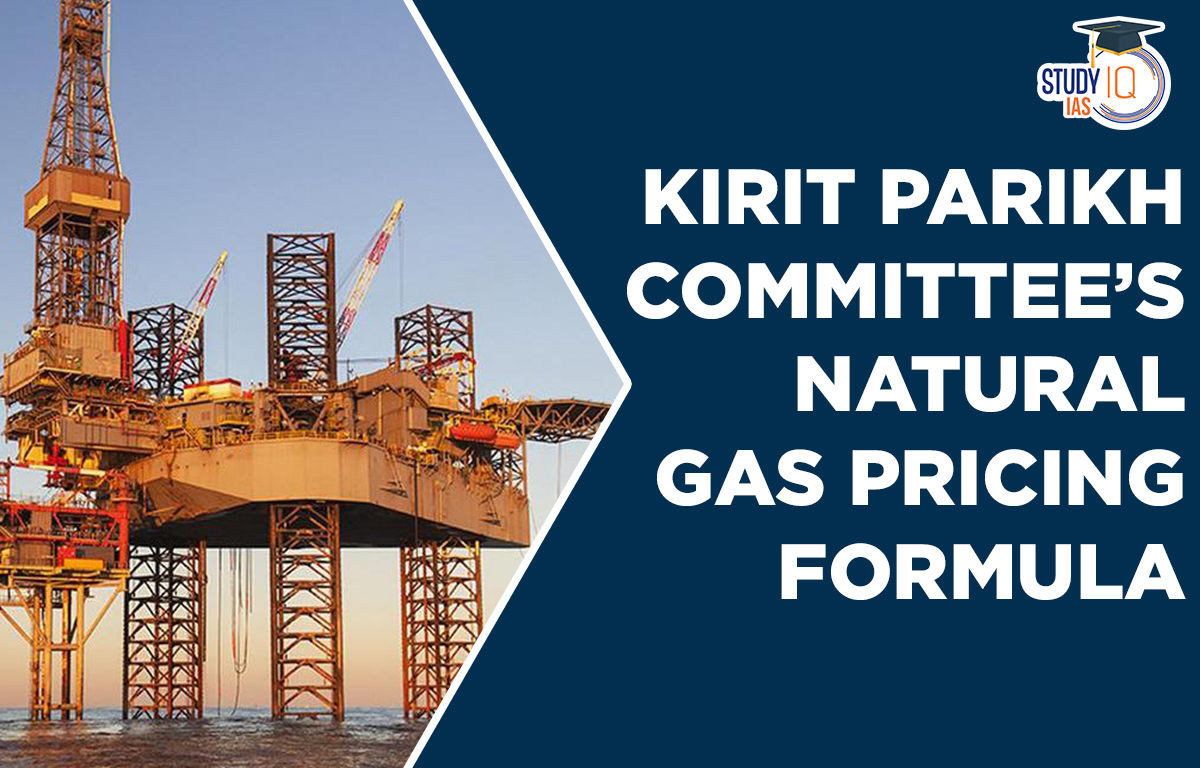Table of Contents
Context: The Union government has just announced a new natural gas pricing regime based on the recommendations of Kirit Parikh committee.
Kirit Parikh Committee’s Natural Gas Pricing Formula Background
- The Cabinet Committee on Economic Affairs recently approved the revised domestic natural gas pricing guidelines for gas produced from nomination fields of Oil and Natural Gas Corporation (ONGC), Oil India Limited (OIL), New Exploration Licensing Policy (NELP) blocks and pre-NELP blocks, where production sharing contract provides for government’s approval of prices.
- Consequently, the piped natural gas (PNG) and compressed natural gas (CNG) will cost less in India.
- Natural gas is converted into CNG for use in automobiles, piped to household kitchens for cooking and used to generate electricity and make fertilisers in India.
India’s Import Dependence
- India imports around 84% of its crude oil needs.
- According to the World Energy Outlook 2021 data, India ranks 3rd globally in crude oil imports. The oil demand is growing at 3-4% a year in India.
- LNG, which is about one-fourth of the total gas demand in India, is also imported to a large extent. India is the fourth-largest importer of LNG too.
- India aims to increase the share of natural gas in the energy basket from 6.4 percent currently to 15 percent by 2030. Currently, around 45-50% of the gas consumption in the country is met through imports.
- With a marked increase in oil prices, increase in imports, and decline in domestic oil production, India’s crude oil import bills are rising.
Existing Domestic Gas Pricing Mechanism in India
- Administered Pricing Mechanism (APM): Prior to 1990’s, the production of gas in India was very tightly controlled by the Central Government.
- The gas fields were allocated to ONGC and OIL by the Government through the process of nomination fields.
- The prices of gas were decided by the Central Government through Administered Pricing Mechanism (APM), which were based on the weighted average price of four markets for producers – US, Canada, Russia and UK.
- The prices of locally produced natural gas were fixed bi-annually with a time lag of a quarter.
- Pre-NELP Field: Between 1990 and prior to implementation of NELP, the Government awarded 28 Exploration Blocks to private companies to increase their participation.
- New Exploration Licensing Policy (NELP): It was approved in 1997. Under NELP, exploration blocks were awarded to Indian, private and foreign companies. It aimed for state of art technologies, new geological concepts and best management practices to explore Oil and Gas resources in India to meet rising demands of Oil and Gas.
- In 2016, the Central Government replaced NELP with Hydrocarbon Exploration & Production Policy (HELP) which was a step towards improving the ‘Ease of Doing Business’ in the Indian Exploration and Production (E&P) sector.
What was the need for the Committee?
- Much of the natural gas being produced in the country does not command a market-determined price and it is not determined by buyers and sellers based on demand-supply dynamics in the market.
- The APM formula has no mention about gas actually imported into India. Typically, gas imported in Asian markets is costlier than many international benchmarks. In effect, the price of domestic gas is lower than that of gas imports.
- The averaging of prices with the time lag of a quarter means that the domestic gas price movement does not reflect the real time changes in the Indian market.
- The APM prices that were based on the weighted average price of four foreign markets fluctuated widely and did not even cover the marginal cost of production of ONGC and OIL.
- Domestic gas prices have been rising in the past couple of years but due to APM, they are still cheaper than imported gas.
- This acts as a disincentive to local producers such as ONGC, who often find that the price is not worth their time and effort to increase output. Consequently, there is an increased gas import at higher prices.
- Consequently, the consumers have to pay more for the compressed natural gas (CNG) and for the piped natural gas (PNG).
- The government had constituted a committee under Kirit Parikh to look at revision in gas prices that balances both local consumer and producer interest, while at the same time advances the country’s cause of becoming a gas-based economy.
Revised Domestic Natural Gas Pricing Guidelines
- As per the new formula, the price of the gas produced domestically will be 10% of the monthly average of the Indian crude basket and notified on a monthly basis.
- The other major recommendation that was accepted was to use one month old price of crude for determining gas price, rather than 15 month-old prices.
- The government has also accepted the recommendation on setting the price based on crude oil.
- Linking gas price to crude will promote use of natural gas as PNG for domestic consumers and CNG for the transport sector in India.
- For the gas produced by ONGC and OIL from their nomination blocks, APM prices shall be subject to a floor ($4 per mmBtu) and a ceiling ($6.5 per mmBtu).
- However, gas produced from new wells or well-interventions in the nomination fields of ONGC and OIL would be allowed a premium of 20% over the APM price to promote more investment in this sector.
- The government also accepted the recommendation of a USD 0.50 per mmBtu annual increase till full deregulation in 2027.
Impact of New Guidelines
- The revised gas pricing norms would lend greater stability to gas prices for city gas distributors and sustained competitiveness with alternative fuels, thus driving demand.
- It also protects consumers particularly CNG and PNG users from paying high prices. CNG and PNG prices had witnessed an 80% jump since August 2021 due to a surge in international energy prices.
- The reduced prices will also lower the fertilizer subsidy burden and help the domestic power sector.
- It also provides adequate protection to producers from adverse market fluctuation with incentives for enhancing production.
- The provision of a floor in gas prices as well as provision for 20% premium for new wells will incentivize ONGC and OIL to make additional long-term investments, leading to greater production of natural gas.
- This new price regime would help expand the consumption of natural gas and contribute to achieving the target of emission reduction and net zero.


 TNPSC Group 4 Admit Card 2025 Out at tnp...
TNPSC Group 4 Admit Card 2025 Out at tnp...
 Species Added to India's Flora and Fauna...
Species Added to India's Flora and Fauna...
 Daily Quiz 02 July 2025
Daily Quiz 02 July 2025





















